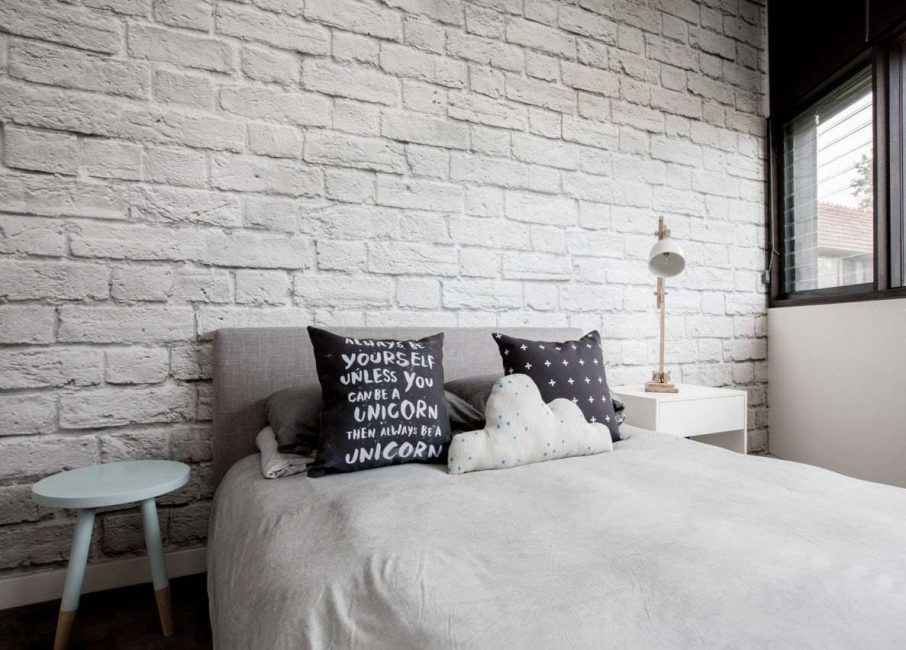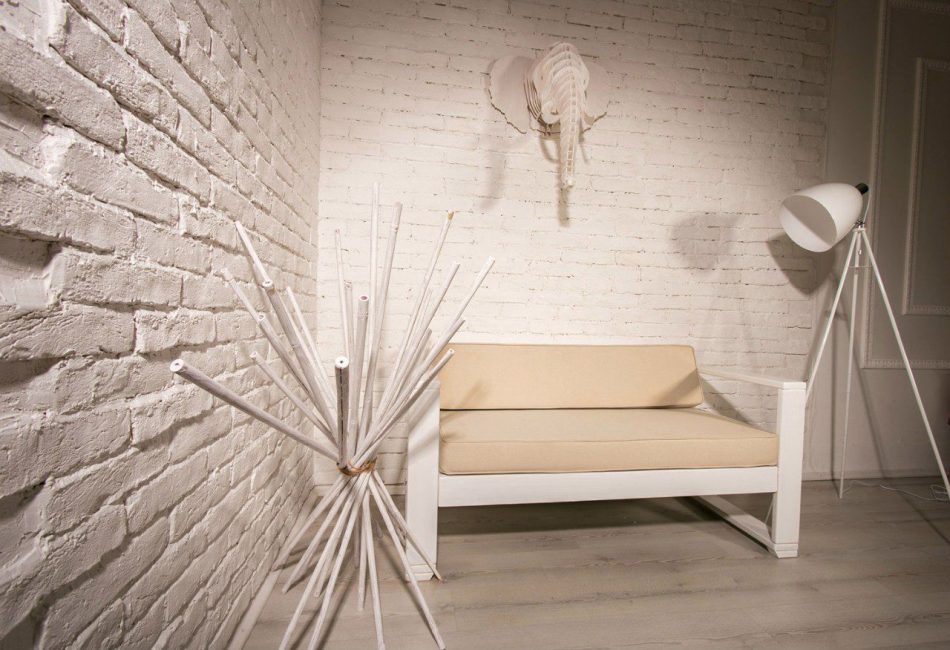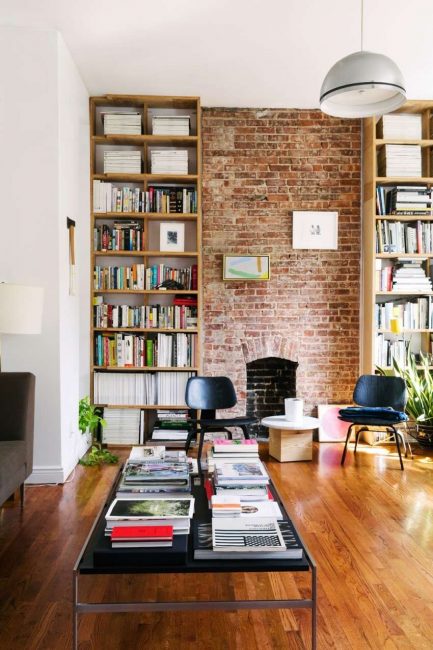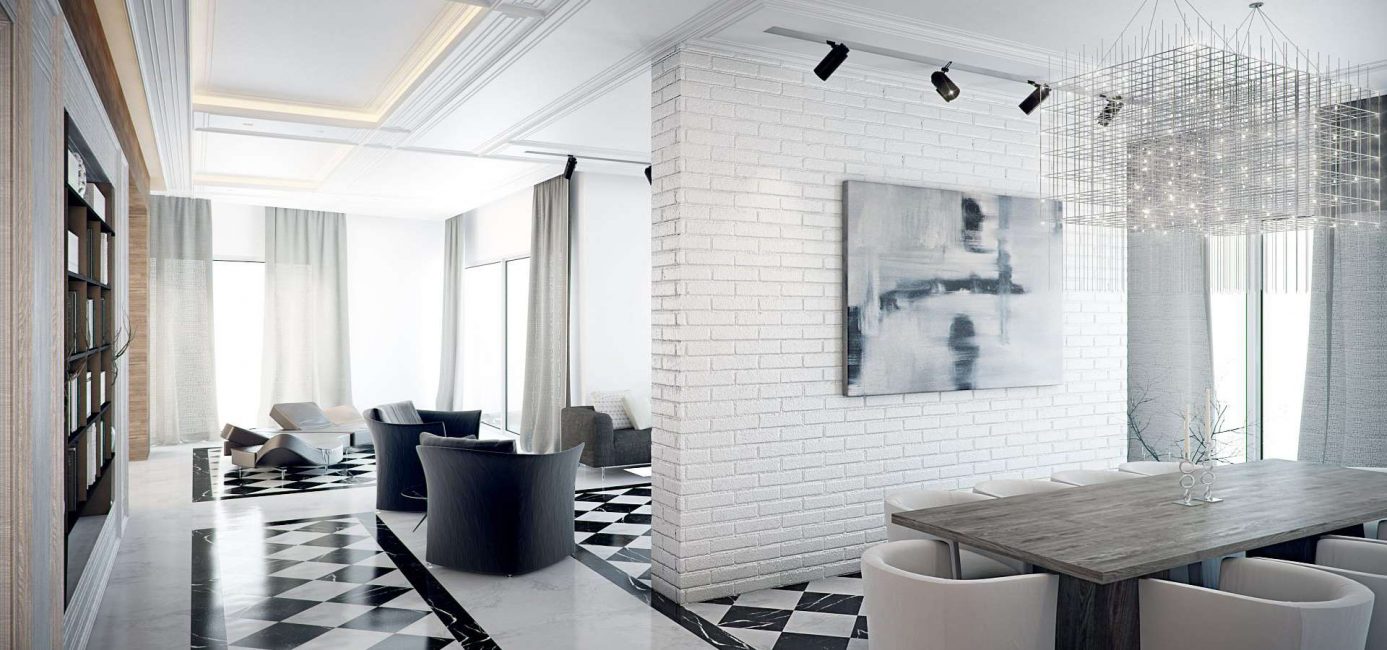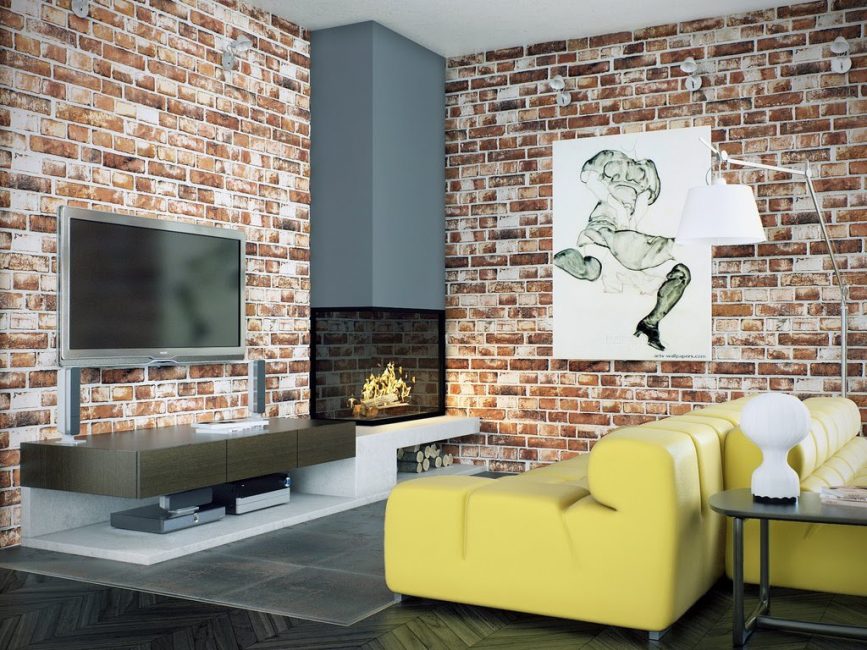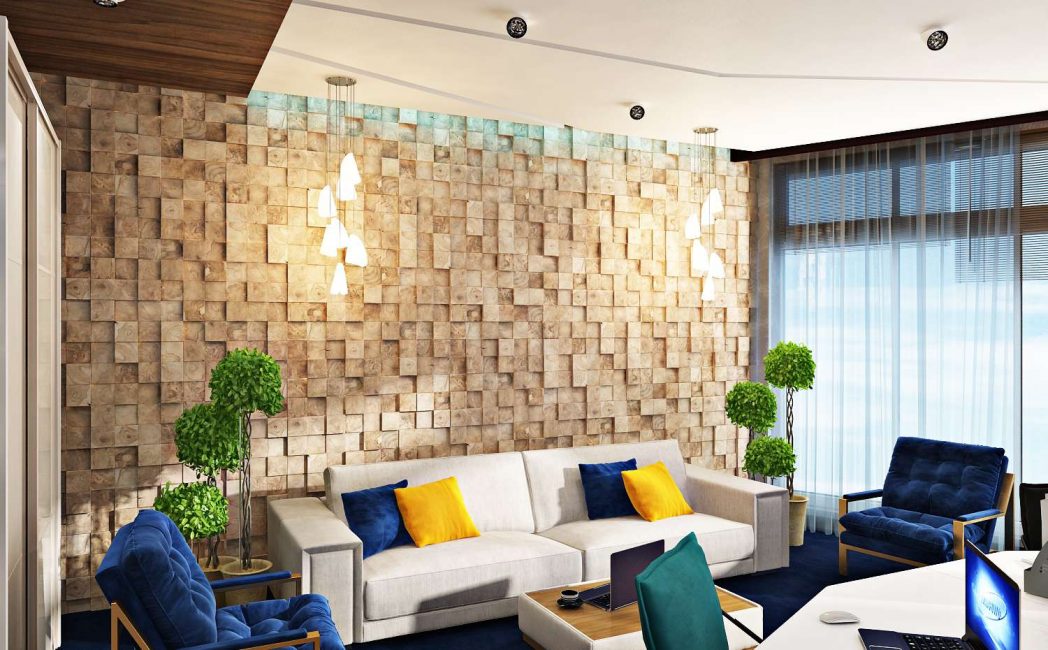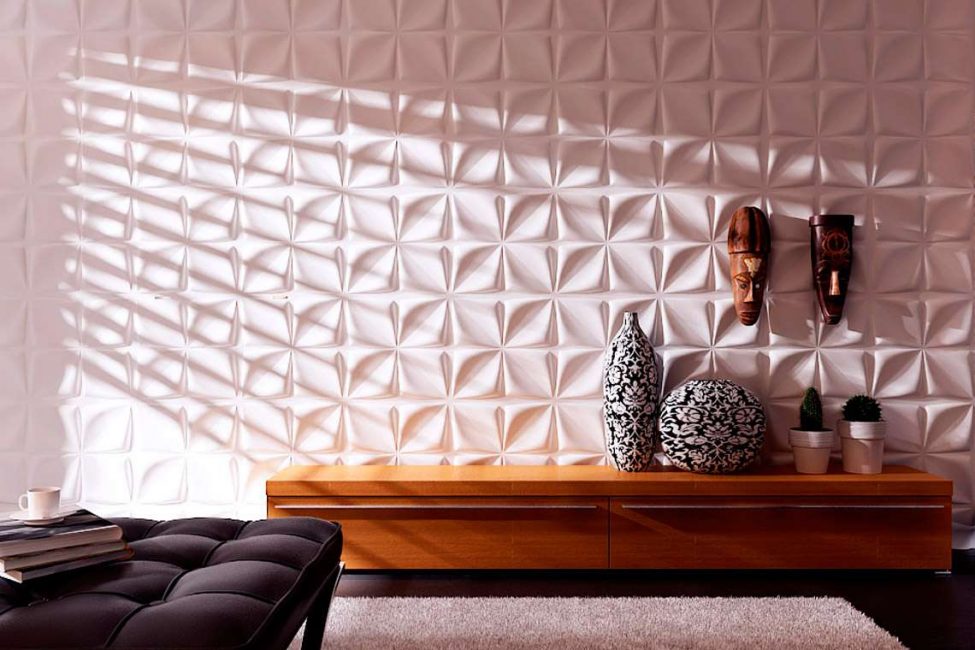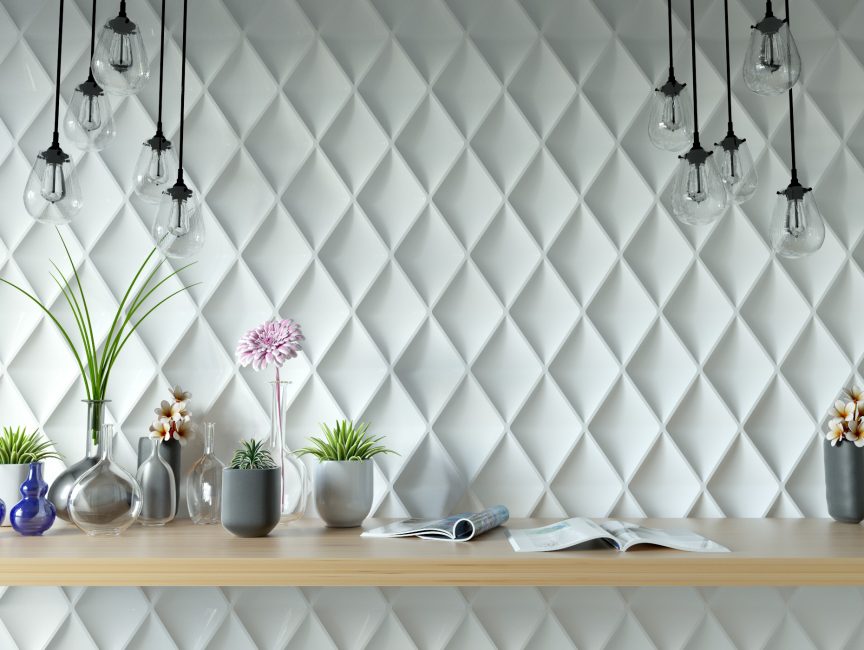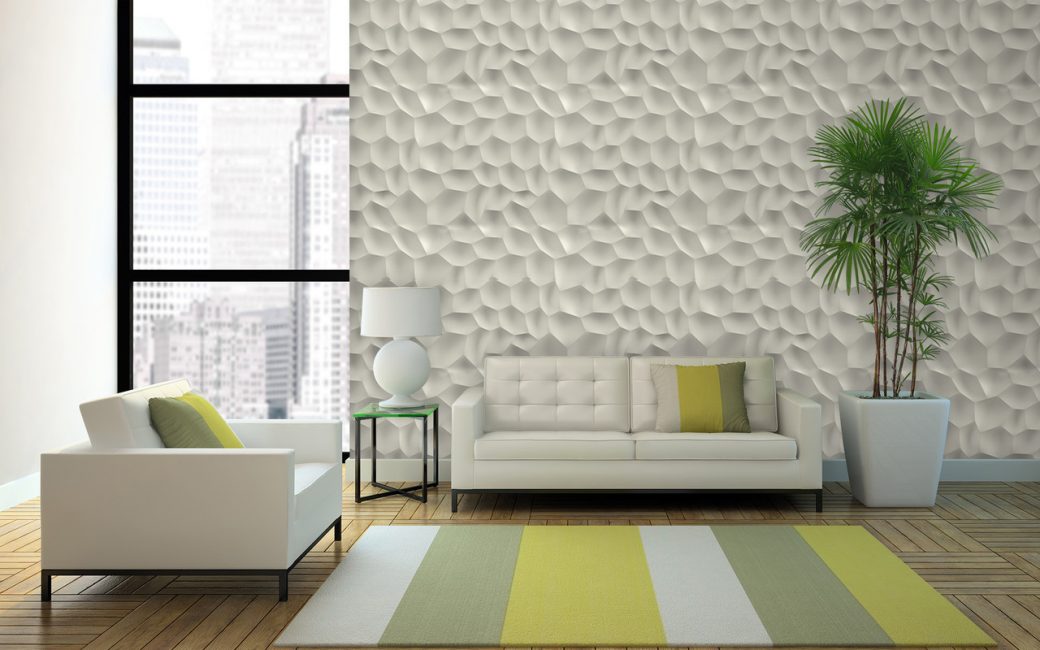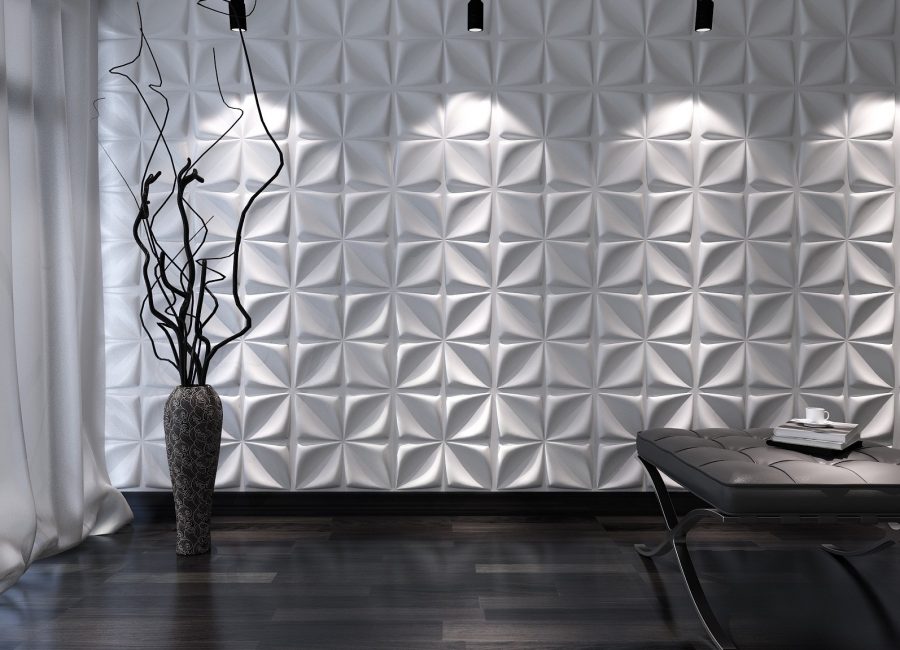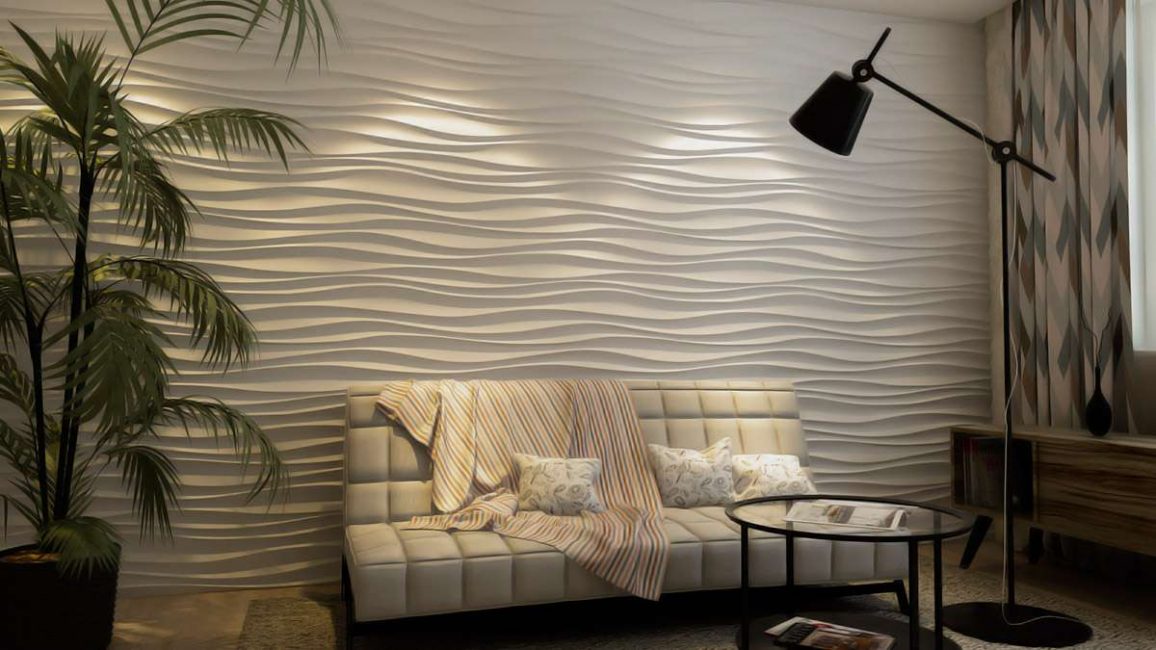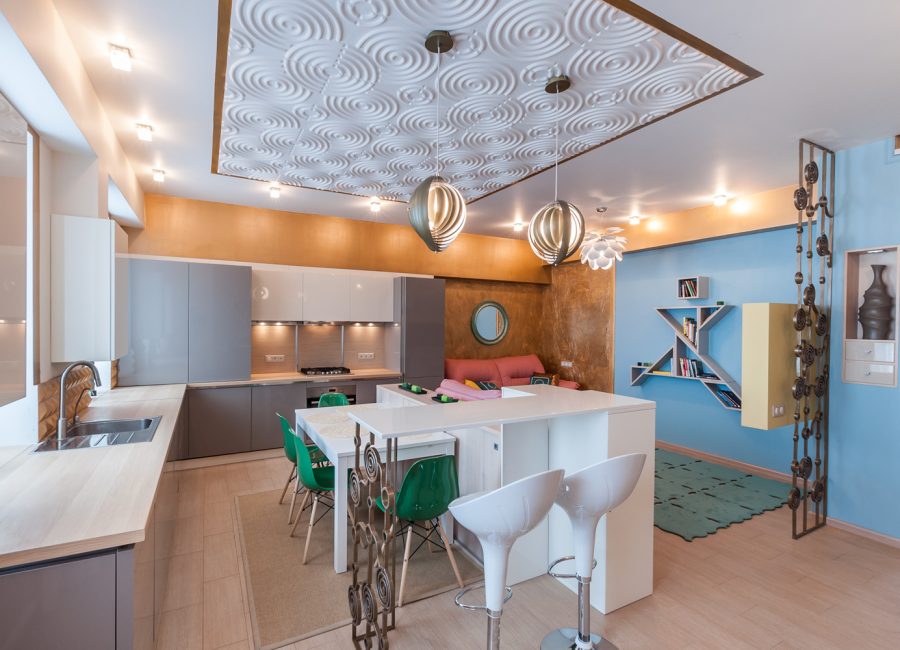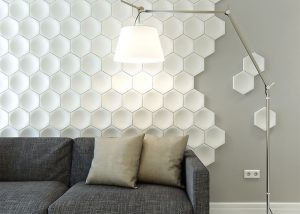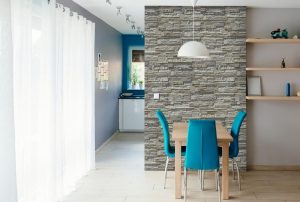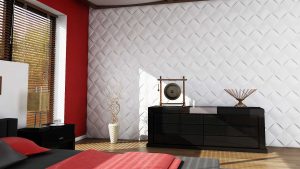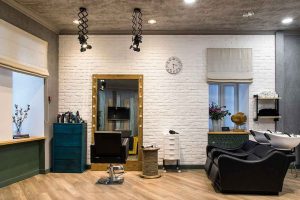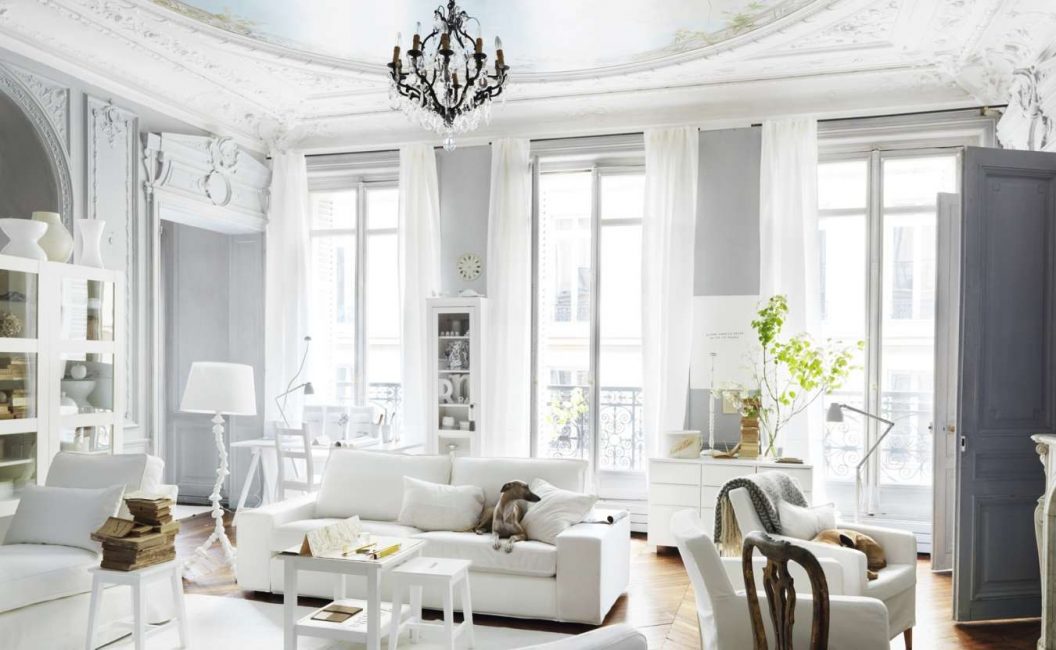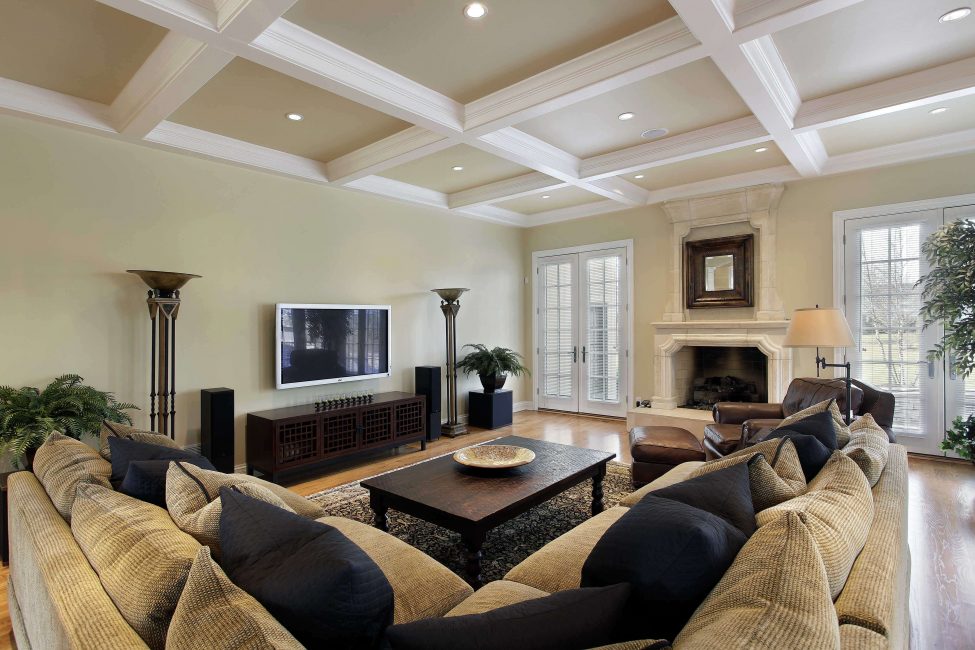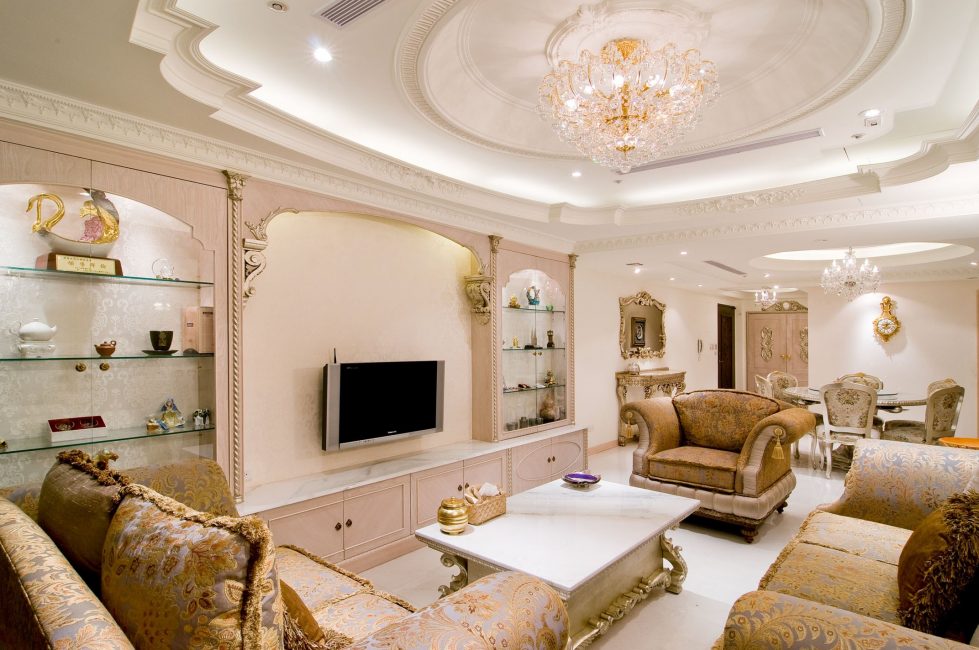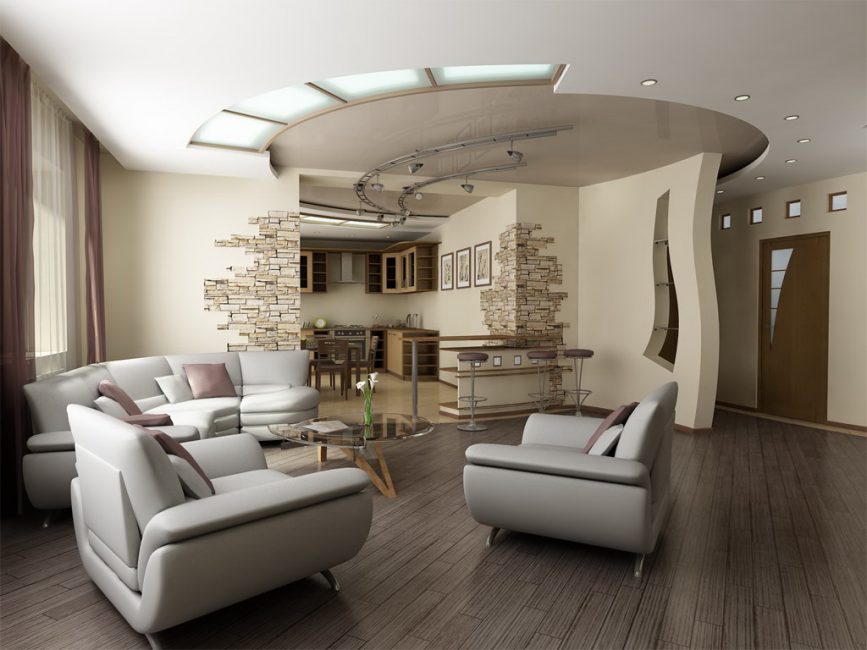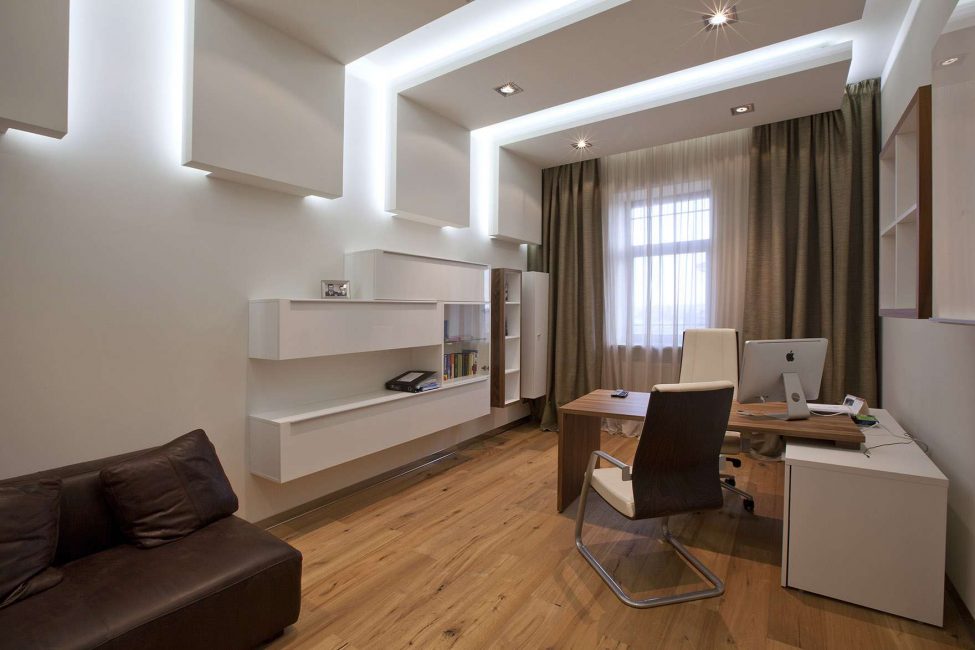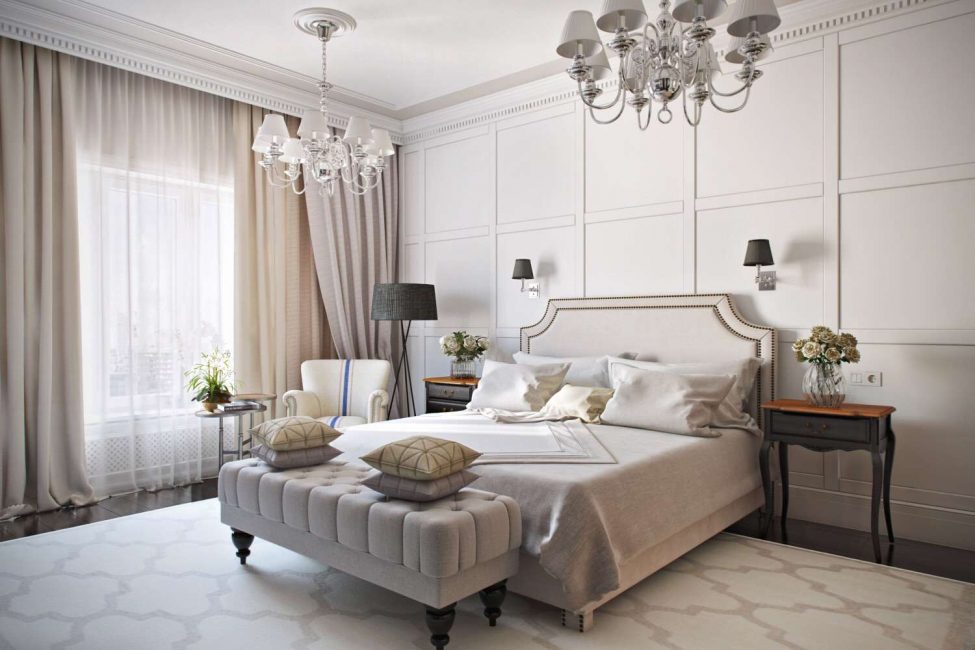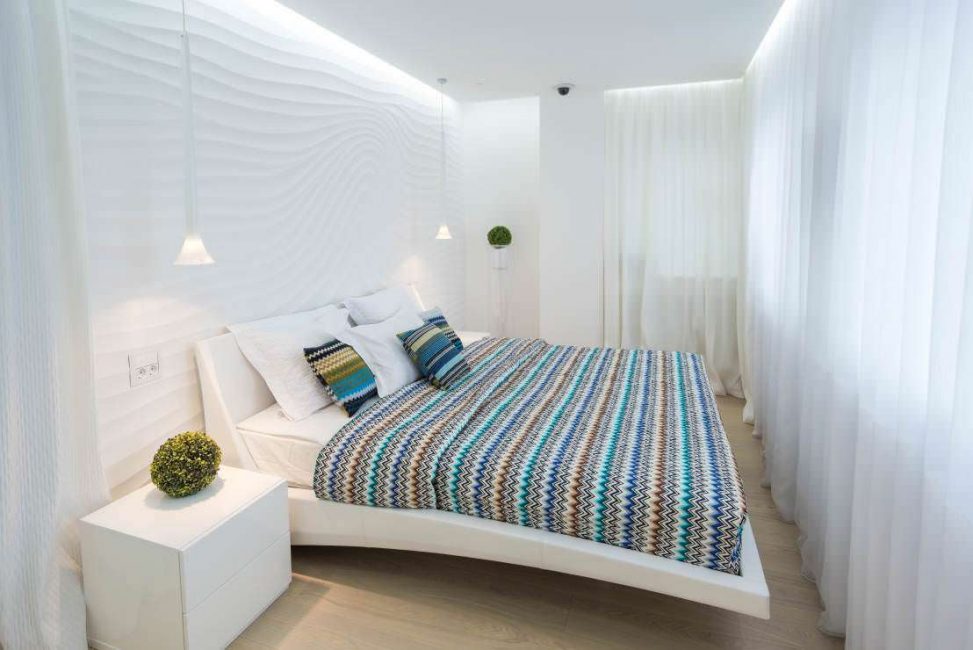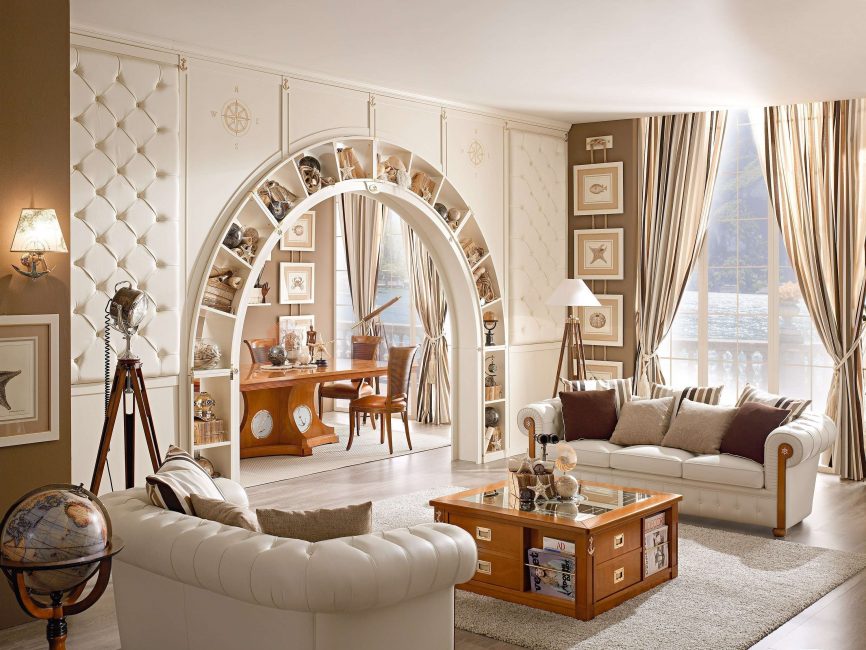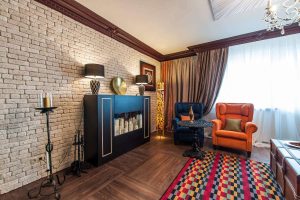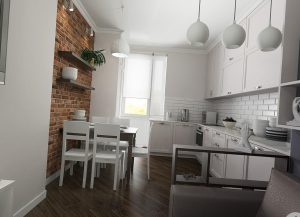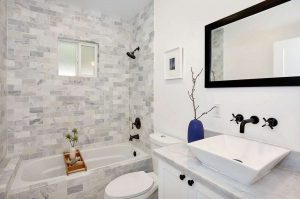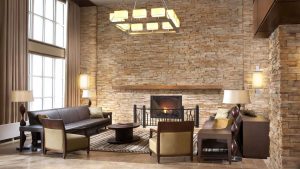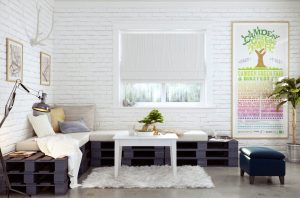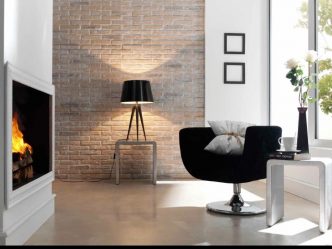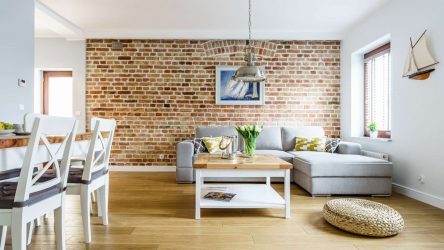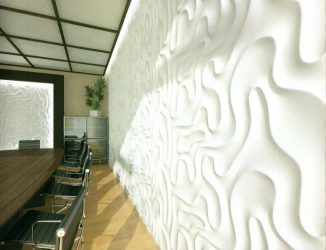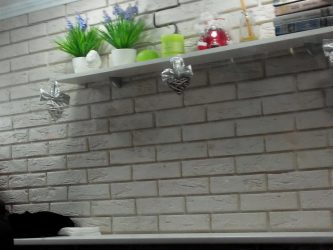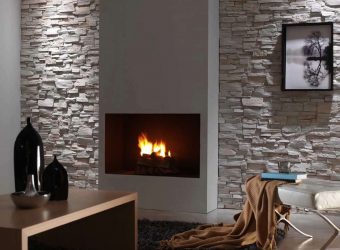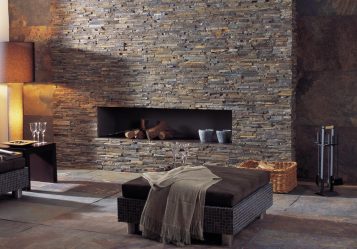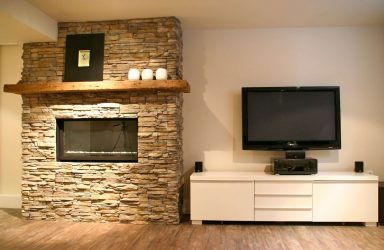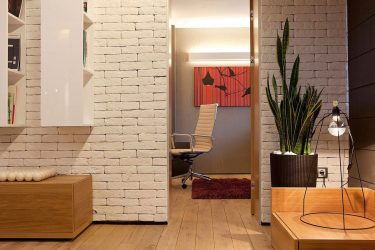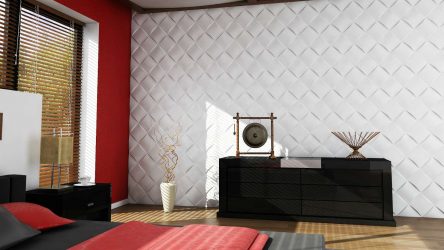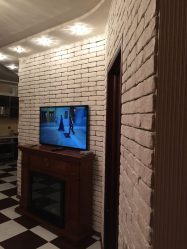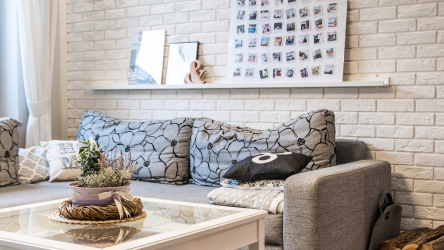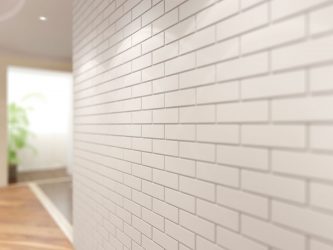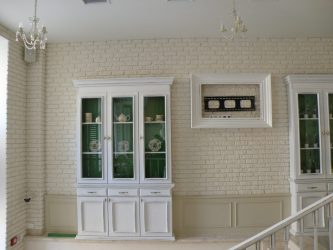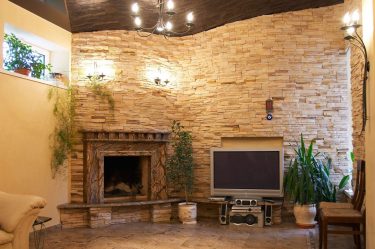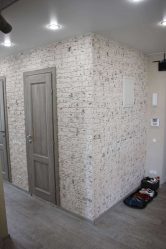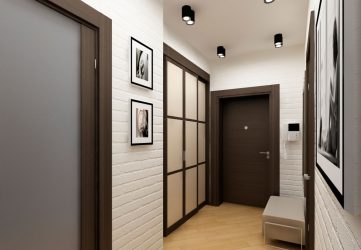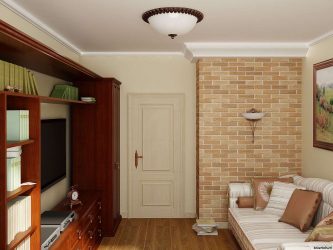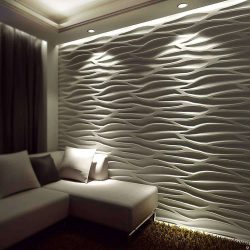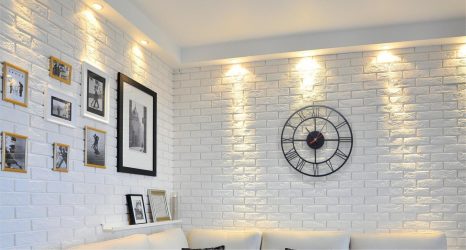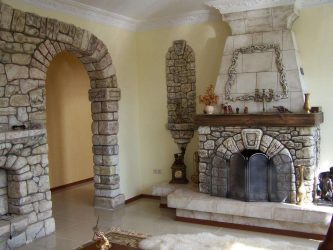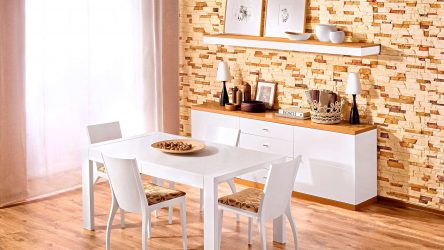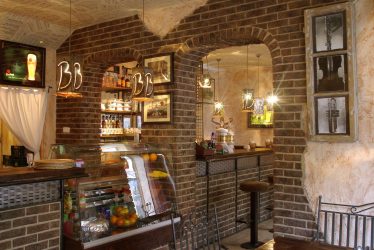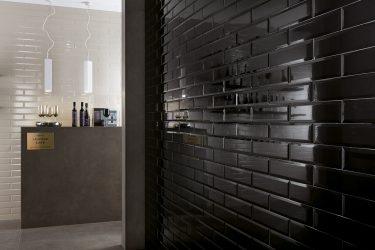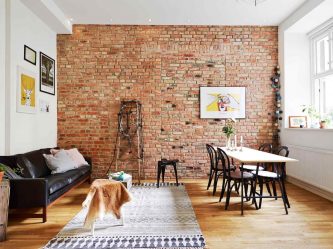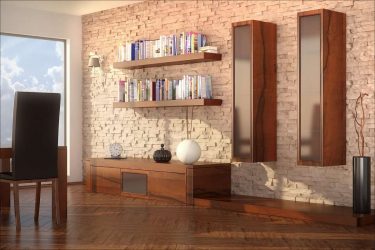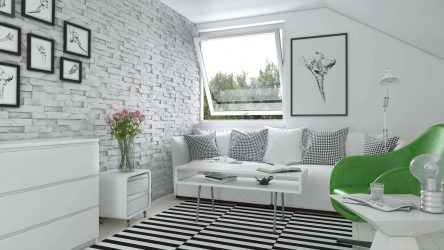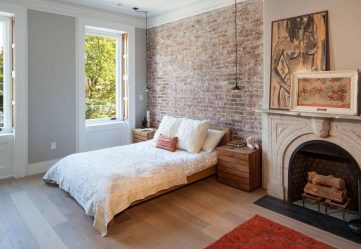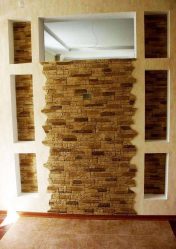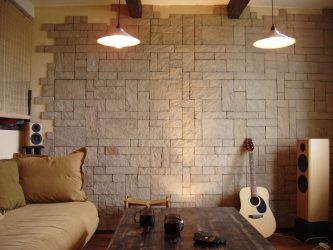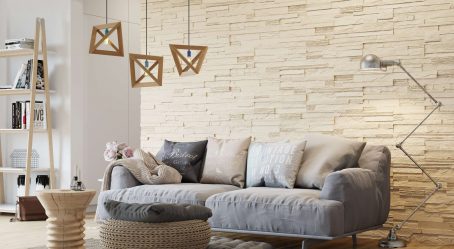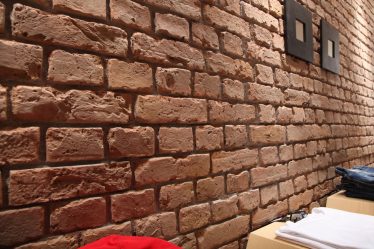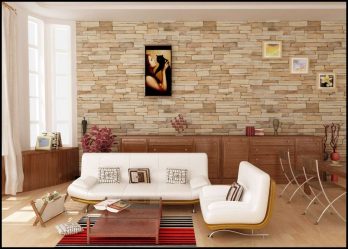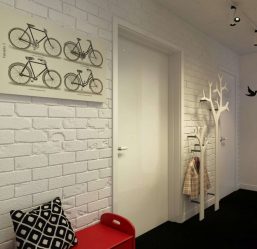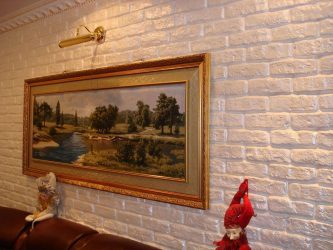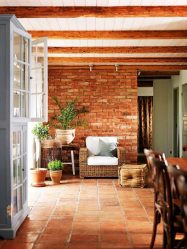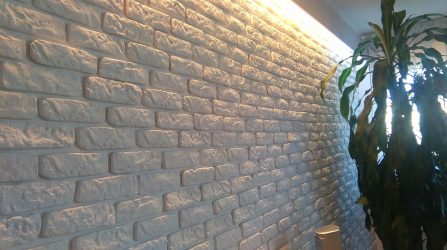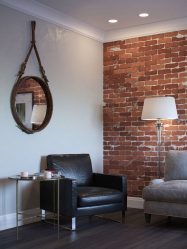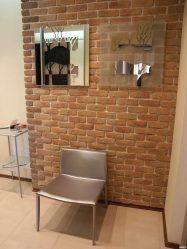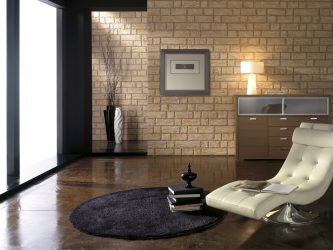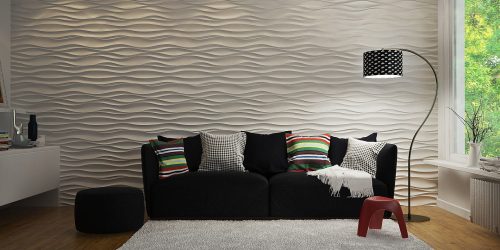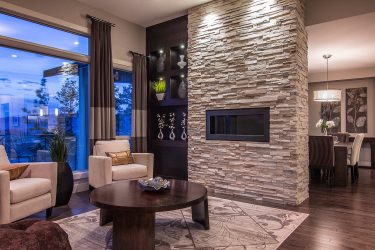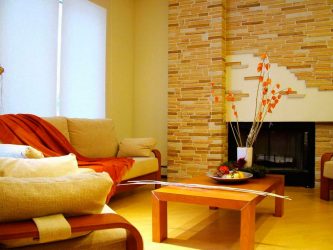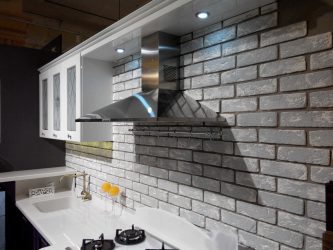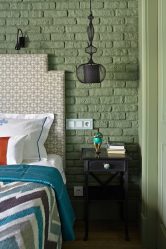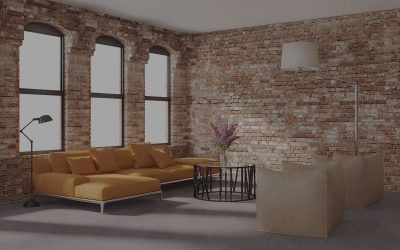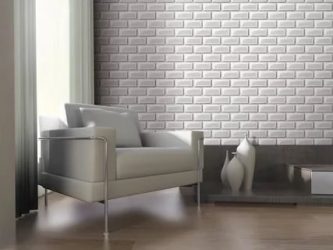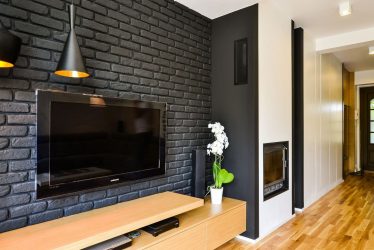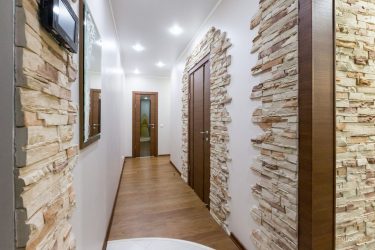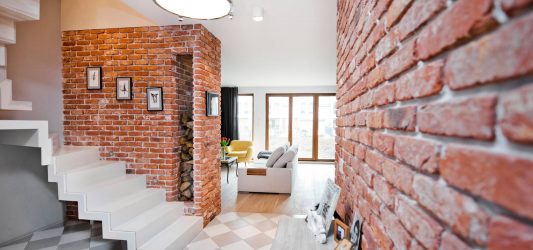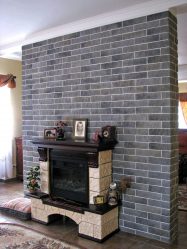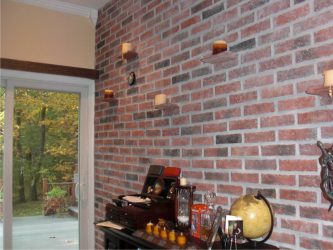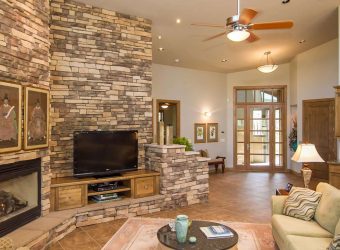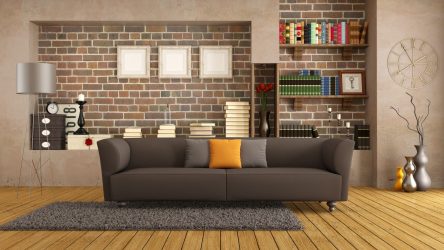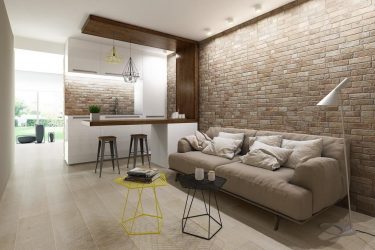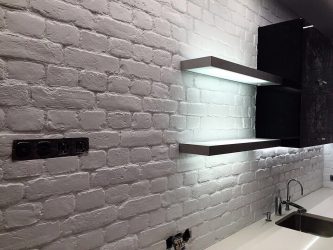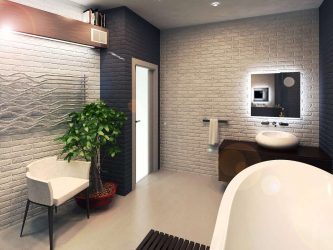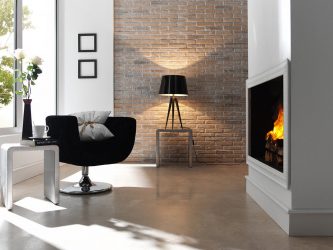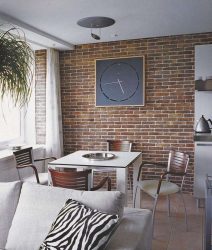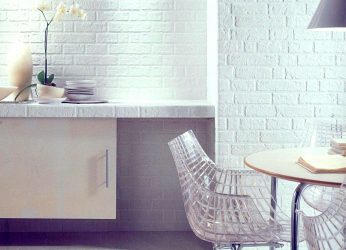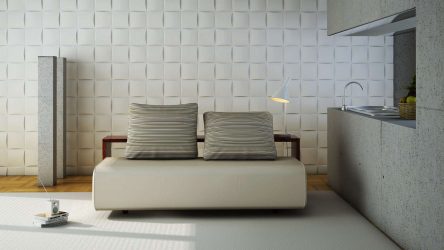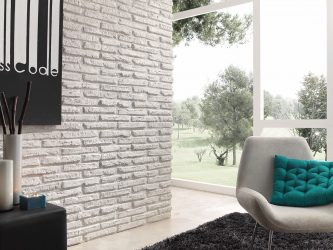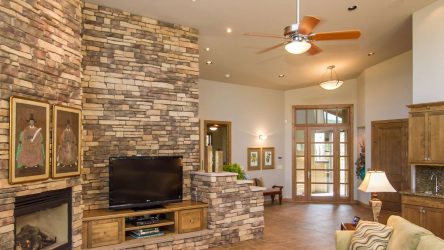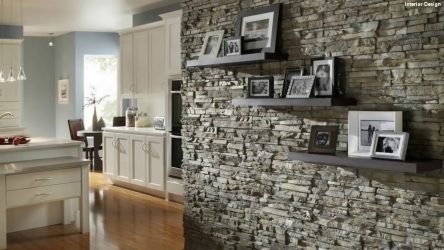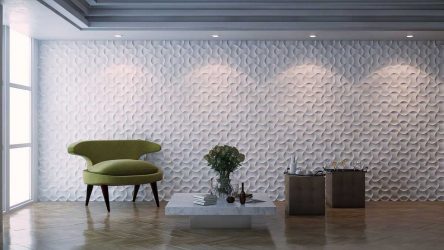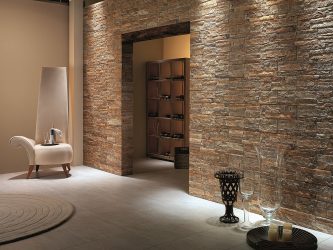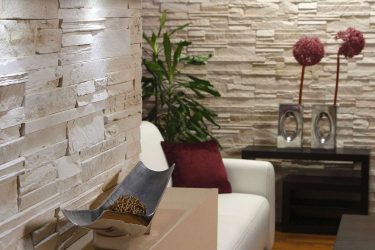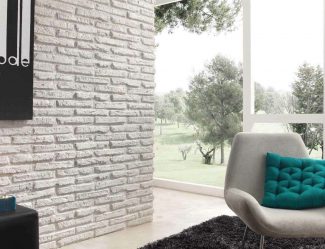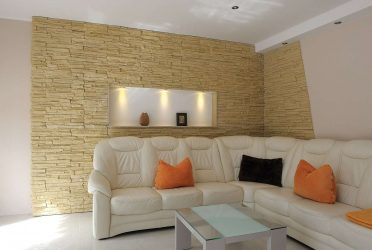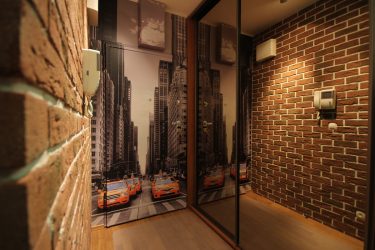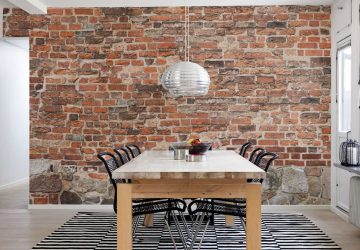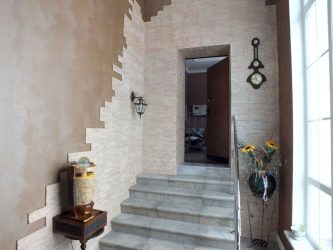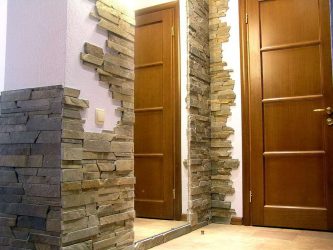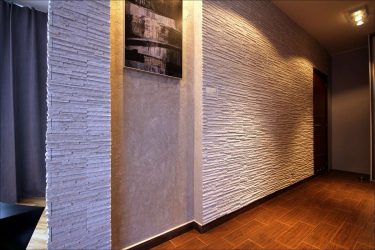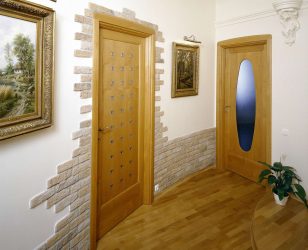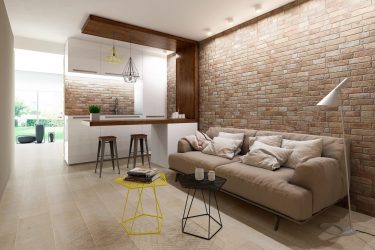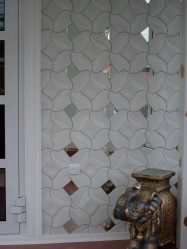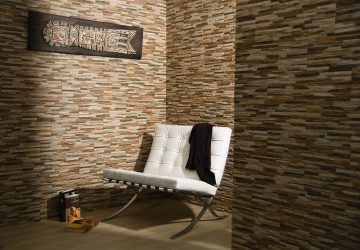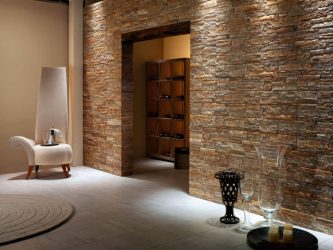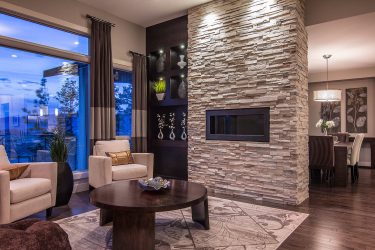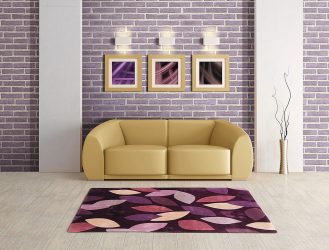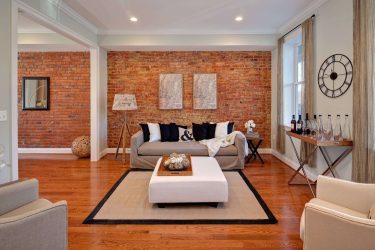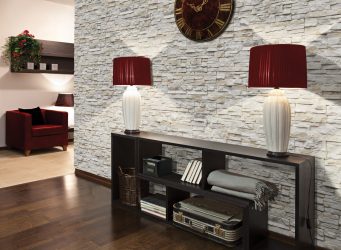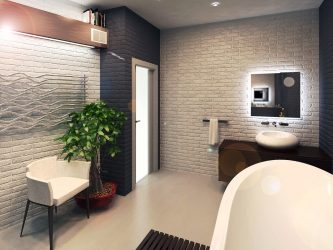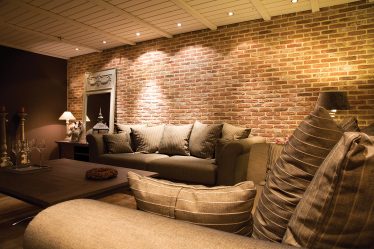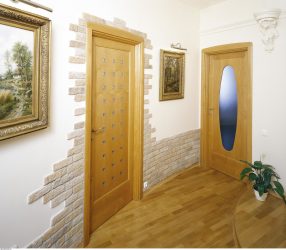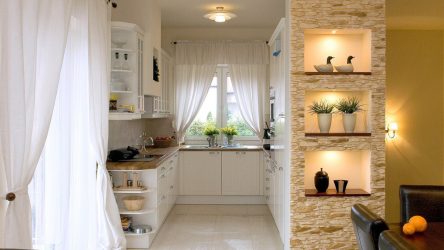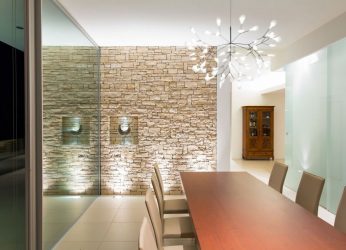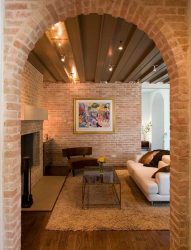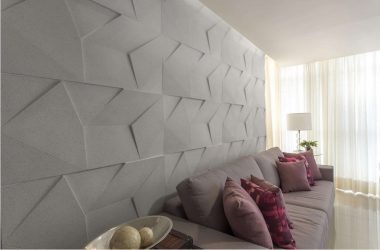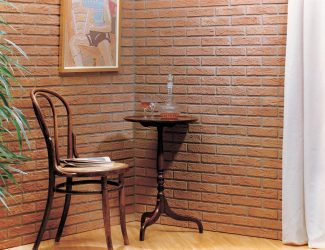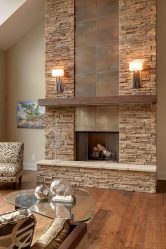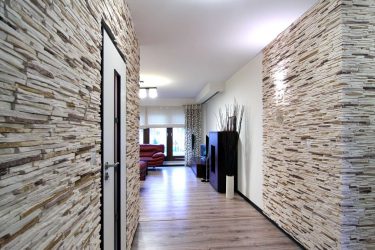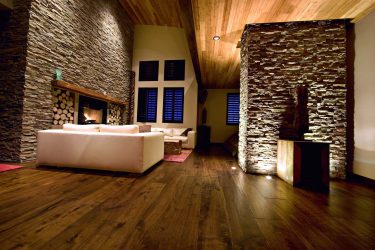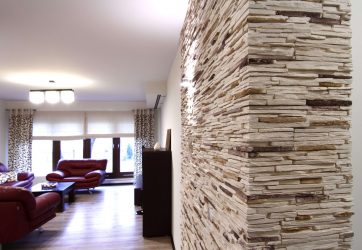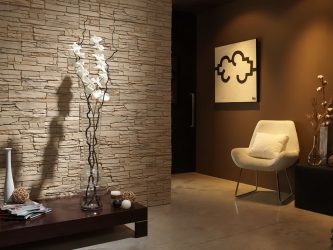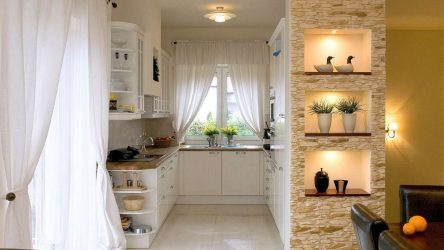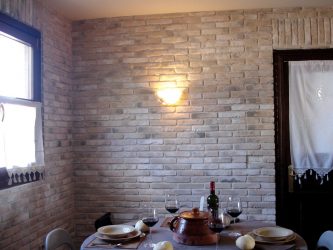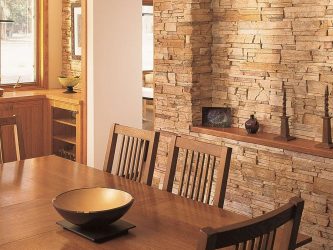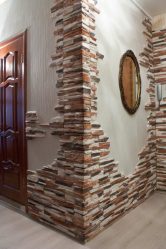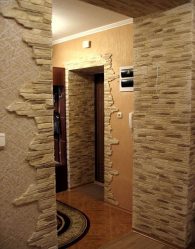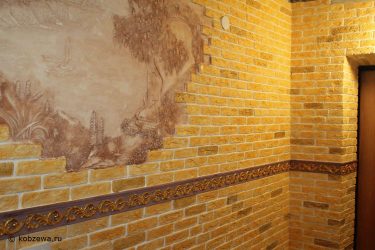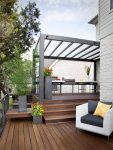
Gypsum tiles and panels are used as cladding for interior decoration of walls and ceilings. Used as a decorative element. The combination of gypsum powder with water has a very high flexibility, supports the formation of beautiful, aesthetically attractive surfaces of almost any shape. The material is also used for molding and other decorations, as well molded.
Content of this article:
Features of products from plaster tiles
Gypsum serves as one of the widely used building materials. Used mainly in interior design, as surface materials for walls, ceilings, stucco. Decor details are made of it:
- sockets under the chandelier;
- internal eaves;
- ceiling framing;
- decorative columns and much more.
Gypsum is a mineral with a color from white to gray, located in the earth's crust. Chemically, it is known as calcium sulfate hydrate (CaSO4,2H2O), which is obtained by extraction from large veins. For interior decoration, a plaster semi-transparent stone, commonly called alabaster, is used, it is suitable for any sculptural forms. In its natural state, it consists of about 30% bound water. This water is extracted through continuous heating until a white powder is obtained.
For the manufacture of gypsum tiles and other gypsum materials, this gypsum is extracted as a raw material.. So-called synthetic gypsum is made from it. To do this, use wet limestone, consisting of a combination of calcium and water, in combination with sulphate, forming calcium sulphate.
return to menu ↑How does gypsum differ from other surfaces?
Among his qualities are unique, in particular, these are:
- has no foreign odors, completely safe;
- widely available in nature;
- comfortable, aesthetic material;
- easy to install;
- fire resistance;
- durability;
- insulation;
- heat resistance
Properties
Fire resistance
It has natural fire resistance, stopping the spread of fire, which can be critical for safety and life. This property is due to the presence of water that is present in gypsum products. For example, a 15 mm thick gypsum tile contains almost 3 liters of crystallized water. When a fire approaches water, water is evaporated, resulting in a protective layer covering the gypsum product. This property will help stop the spread of fire from other materials.
Non-flammable
As explained, the heating of the gypsum products leads to the heating of water crystals present in the gypsum material. This dehydration of gypsum heat is called calcination. Firing leads to the formation of a coating that prevents it from burning, allowing the material next to it to maintain a lower, safer temperature.
Even after the water crystals are completely calcined, the residue will behave as an insulating layer until it is destroyed. Gypsum is considered a good fire deterrent because of its ability to stop the spread of fire for several hours, depending on the amount of gypsum products.
Acoustics
Gypsum products are renowned for their sound insulation properties, which are much more efficient than brick masonry, if you take the same thickness. Gypsum is specifically designed to reduce noise and prevent reverberation. The space between the two plaster walls leads to higher acoustic characteristics, limiting the passage of noise. For example, instead of a brick wall 110 mm thick, we can install gypsum boards 75 mm thick to achieve the same sound performance.
Heat resistance
The thermal properties created by the gypsum construction will ensure good balance of humidity and temperature in the room. Gypsum construction, including cavities, such as drywall or formwork, provides additional insulating properties.
Vapor barrier
The use of gypsum boards in interior design prevents humidity in the room.
Gypsum walls
Plaster walls are durable painted surfaces that are suitable for all types of indoor environments. Material does not contain volatile organic compounds (VOC). Due to the structural diversity well forms the atmosphere, tone, mood in the home or office.
3D Accent Walls
This is not yet a hackneyed way of decorating houses and apartments, which fashion designers have already adopted. Three-dimensional wall panels can complement almost any internal residential or commercial environment, helping to create a colorful living space. This is a modern, simple, economical material for decoration, which can be quickly installed, painted in any color to match the interior.
They can be used to create accent walls, background walls for TV, bedrooms, children's rooms, offices, restaurants, entertainment centers.
return to menu ↑What are they?
This embossed composite tile with a complex single pattern that provides a three-dimensional finish in the interior, is sold in square meters. Each part has a size of about 60/60 cm, but other formats are possible. The principle of registration is to give a smooth monolithic surface without joints and seams, therefore, every detail is made to fit into the next.
Cover texture
You can choose any repeating geometric pattern or make a sketch yourself - for this there are already quite advanced technologies that allow you to realize personal projects of bulk walls based on gypsum.
The most frequent patterns are selected waves, honeycombs, circles, pits, moons, ripples. You can get a very realistic imitation of a brick wall and other surfaces.
The material can be painted in any color. Ie, you choose not only the shape for your wall, but its color range to the desired shade. It is also possible to repaint such walls, even several times. They can also be artificially aged, for example, in the technique of craquelure or patina.
Installation of such panels can be done independently.. The joints are made with an accuracy of micron, so that all the parts are assembled into one stunning pattern, without any visible borders of the tiles. To create one large seamless textured wall, apply glue, which is applied with a spatula to the back surface of the tiles, and then installed.
So, step by step, three-dimensional gypsum panels are glued to the entire wall. If you need to cut a sheet, then it is easy to do with an ordinary saw. Since the material is quite fragile, care is needed when working with it, protect it from falling.
Thus, a designer wall in your interior can be obtained without the participation of a professional decorator. Add a sculpted panel to the wall to decorate and create texture. Paint your three-dimensional wall in any color, using household paint, tint or contrast with the existing decor.
Dropped ceilings
The modern suspended ceiling system has not changed much since the 1960s and it is still the most common type of ceiling used in the design of commercial and residential buildings. It has many strengths that include low cost, flexibility, quick installation, acoustic properties, adaptability for lighting and mechanical systems, as well as for easy access to the ventilation chamber.
Studies have shown that adding design elements to the ceiling can have a significant impact on the overall atmosphere of a space, and can create a sense of openness, privacy, intimacy, or even energy. In addition, a study analyzing the life cycle of ceilings versus open style showed that, although the initial installation costs are higher for suspended ceiling systems, the energy and maintenance costs are lower than with open structures.
Suspended ceiling systems using gypsum ceiling tiles present tremendous opportunities for designers and architects to create an impression and visual interest in interior decoration, as well as solve a number of performance, safety, and overall appearance problems.
Main characteristics
Gypsum ceilings are the ceiling construction of tiles, panels or blocks with adjustable height for easy installation of all types of pipes, insulation materials, heating and lighting devices. They also easily adapt to special construction requirements, such as:
- round ceilings;
- domes;
- sloping ceiling;
- recessed lighting, etc.
They are a secondary structure that is attached to the main ceiling. It is a combined independent design, ready for painting, lightweight, with excellent sound absorption, fireproof, economical. In addition, the plaster ceiling tile with a plastic coating in the front and with an aluminum coating on the back side is durable and wear-resistant. She also washes ordinary household detergents. It offers good sound insulation, water-repellent properties and painting that will not fade under direct sunlight.
Duplicate modules (panels, plates, blocks) are suitable for any shape, if necessary, cut off. Such a ceiling will improve the quality of indoor air, will be easy to handle and install.
return to menu ↑Principles of installation
The suspended ceiling is slightly lower than the main one, it allows you to hide all the wires from the chandeliers, to effectively place point, recessed lighting. Installation occurs on the principle of frame system. After installing the frame, you should work with the wiring and connect the future lighting with the output of the corresponding wires.
The framework can consist of square or rectangular divisions depending on what type of architecture and design is needed.. Sometimes ceiling tiles are trimmed to hold non-standard or circular lighting fixtures. In other cases, it may not be necessary to use tiles in place of the lighting fixture. In the third case, buy a special ceiling outlet of plaster, used for chandeliers. When choosing how to place fixtures, most designers are guided by specific needs.
Most tiles do not require special cutting tools and are compatible with various types of glue and installation methods. In addition, many products are provided with a removable layer for additional protection during installation.
Summarizing what has been said, such a decor for decoration allows you to drastically change the appearance of the internal space without an overhaul, and the project of reconstruction or remodeling can be quickly completed even by the most novice master.
return to menu ↑Wall plates
Any base is suitable for laying decorative tiles. Combine a series of panels or tiles in a continuous pattern. Seamless pattern can be positioned vertically or horizontally, this is reflected in the instructions. When the installation is complete, the gap between the panels will not be noticeable. What to consider when installing wallboard:
- If necessary, use the tile as a separate insert, decoration.Fill it with a certain space, not necessarily the entire wall. The size of the installation is limited only by your imagination and room capabilities.
- Painting the surface maximizes the capabilities of the tile, as its fine-grained structure absorbs well and conveys color.
- Carefully unpack each panel for installation, let it acclimatise to the temperature and humidity of the environment and prepare it for painting to get the desired effect.
- Or order pre-painted wall panels. In factories and firms professionally paint the product in any color, including beautiful metallic shades of water-based paints. However, pre-painting is not suitable in cases where a seamless installation is needed. Choose this method only when it is important to save time and effort. Painted panels perfectly reflect the mood and atmosphere, and are particularly suitable for rooms with high levels of terrain.
With the right texture and color, the stimulating effect increases if you need to get some action from those present:
- decide on the purchase or cooperation in commercial establishments;
- eat a lot or a little in the kitchen (for a good appetite, choose red paint, and for those who lose weight, blue is suitable);
- Enhance creativity and productivity.
At home, you can make rooms more energetic and lively, less busy, or relaxed and relaxed.
Color is important for any design scheme. Bright colors like red and yellow add energy and blue, green and other cooler colors create a calming effect.. The versatility of gray, white, black and brown provides the flexibility to create effects with the addition of other colors.
return to menu ↑Materials
Gypsum panels consist of medium density fibreboard (made from recycled wood) and porcelain plaster. Sulphate mineral (gypsum) is often used for plaster and wallcovering. The grade of gypsum used in panels and slabs for interior decoration of a house is usually alabaster, fine-grained white / slightly tinted plaster material. This flexible material used for sculptures is processed with any type of paint or texture.
return to menu ↑
The benefits of gypsum
Summing up, we list some strengths:
- provides a smooth surface without cracks and chips, which are easily masked with plaster as well as the seams;
- using the backlight you can increase the volume effect;
- indoor air circulation. The natural origin of the material provides the natural ability to regulate the climate and humidity in the room;
- provides good aesthetic and functional features;
- due to the low price, you can even make a professional project with a designer for a reasonable price;
- many amazing design options;
- easy installation;
- gypsum plaster can be used as a final finish without using paint. White finish gives a clean look.
- interior of the apartment, interior design.
VIDEO: How to lay and paint a plaster stone?
Gypsum tiles in the interior
Imitation unpainted tiles

